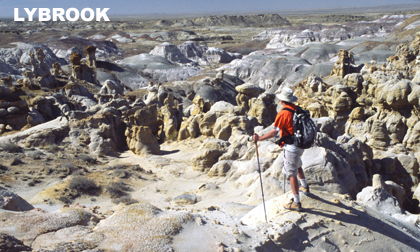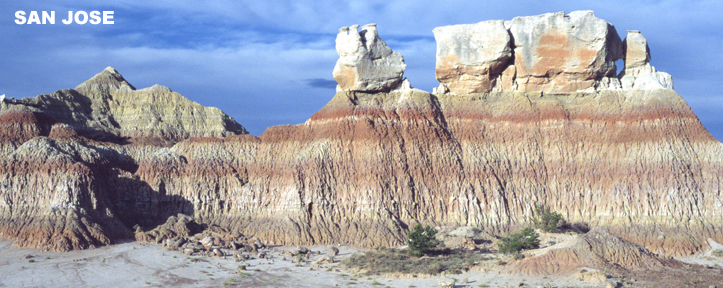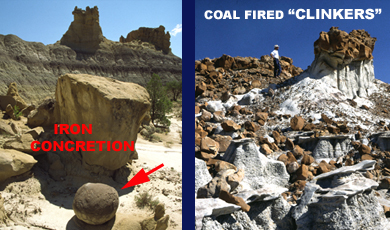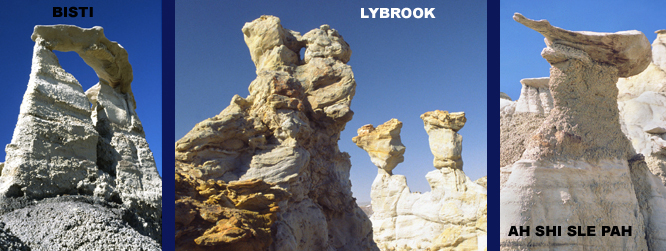
SAN JUAN BASIN FORMATIONS:
SLICES OF GEOLOGIC TIME

A named formation (distinguishable layer) is the basic unit or chapter in a paleoecology biography. Geologists define a formation as a recognizable, mapped rock layer with fairly widespread surface exposure that corresponds to a specific slice of geologic time. Rock types might vary at different geographic locations within the same formation but deposition times must match. Identical fossils occurring at different locales within a formation are one way to help establish dates.
There is often additional sequential diversity in the rock types within a formation even at the same locale. These recognizable sub layers or members give formations their banded appearance. They correspond to different rock types, which in turn reflect changes in depositional environments within the larger context of the formation’s time span as a whole. A repeating banded pattern for example suggests very long range cyclical conditions.

Erosion resistant sandstone layers alternating with weaker siltstone and shale create the stair step topography that adds intricacy and drama in some badlands.
Sedimentary rocks can be modified significantly, long after their initial deposition and rock forming processes. Full-fledged metamorphosis occurs when intense heat and pressure transform original rock into something else. Classic examples are limestone turning into marble and sandstone into quartzite. No large scale metamorphosis happened within the San Juan Basin. However several badlands have widespread layers where ancient underground coal fires turned surrounding rocks into hard, brittle ceramic like materials which geologists call “clinkers.”

More subtle rock modifications can occur from pressure, or from subsequent chemical alterations caused by ground water minerals interacting with copious organic matter that was always present throughout the basin’s history. Together these effects can produce various types of localized, erosion resistant, often uniquely colored and shaped bodies known as concretions. Concretions help supply materials for the weirdly shaped cap rocks which are the essence of hoo doos. Ancient soil profiles cemented by quartz-like silica into erosion resistant stone layers called silcretes are also plentiful in the Nacimiento formation and provide still more materials for cap rocks.

| HOME |
GEOLOGY |
PHOTOGRAPHY TIPS | RECREATION | MAP - INDIVIDUAL BADLANDS |
| INDIVIDUAL BADLANDS PAGE | PHOTO TOURS |
BADLANDS OVERVIEW |
This site is property of PhotoTrekNM. All rights reserved. Copyright 2007.
